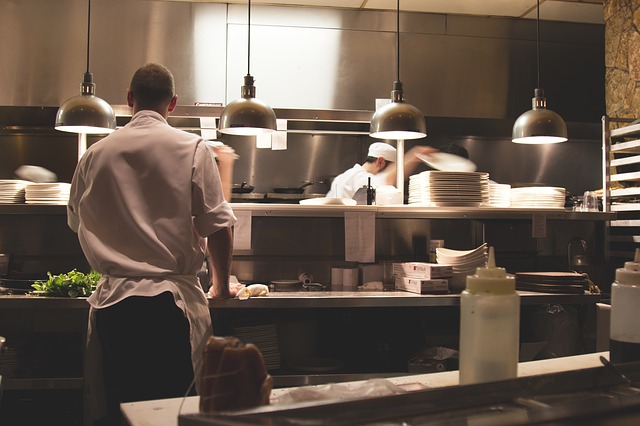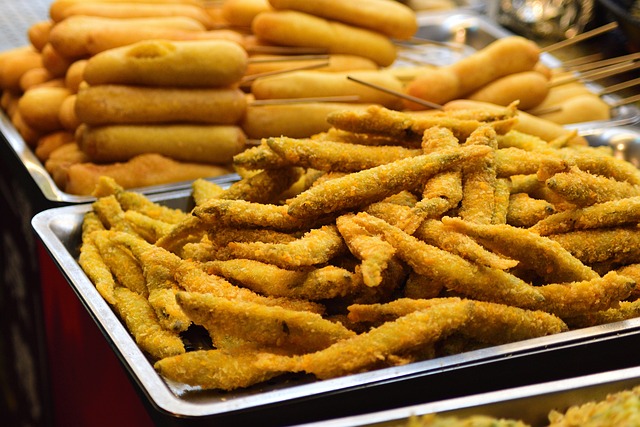Recycling used cooking oil is a simple yet effective and smart option. It’s also an opportunity to protect the environment and increase your bottom line. But which method should you use to empty your fryer of used grease so that it can be reused later?
There are different options depending on the size of your restaurant. From outdoor storage containers to direct pump systems.
The following are 4 of the most common options we see in the industry.
1. Outdoor storage containers
Outdoor cooking oil storage containers work more or less like cooking oil dumpsters or trash dumpsters. A restaurant employee must manually carry the used cooking oil to these storage containers.
For some restaurants, it may be the only feasible option. Because the cooking oil has to be transported to the storage container, this method does have a small margin of error.
When a restaurant employee is transporting the cooking oil, it’s fairly easy for the oil to spill. Because of the potential oil spillage, the employee could slip or even burn themselves.
The oil spills could also cause serious environmental problems that could attract heavy financial repercussions. In addition, outdoor grease storage containers could be easily stolen. To prevent this risk, some products come with specially designed lids that deter thieves.
To sum it up, an outdoor storage container:
- Has some risks of spills and burns
- Is easy to conceal in a closed corral
- May require theft-deterrent lids
2. Indoor caddy system
The indoor caddy system, because of its specially designed quick connectors that provide for the safe and easy transfer of used cooking oil, is a better alternative to outdoor oil connection.
With this option, a restaurant employee only needs to wheel the caddy next to the fryer, attach a hose, and drain the used oil into a portable cart. Once all of the oil has drained to the caddy system, it can then be easily wheeled to the storage tank outside – with no risk of messy oil on hands or risk of oil spills.
Apart from the convenience, you receive the maximum rebate possible for the used cooking oil as there is no risk of theft.
To sum it up, an indoor caddy system:
- Reduces the risk of injuries and spills
- Is easy to install
- Requires some manual labor
3. Indoor pump station
The indoor pump station is a step above the caddy system when it comes to preventing accidents. Thanks to a wand, there is no need for restaurant employees to manually remove the used cooking oil from your fryer.
The wand works by siphoning the used cooking oil into an indoor storage container. When using the wand to siphon the used cooking oil, experts recommend doing so with the proper safety gear. With the right gear, this method can drastically reduce the risk of spills, burns and other accidents related to handling used cooking oil.
The pump station should be close enough to connect the piping. Ideally, it should be near the fryer banks and storage tank.
Indoor pump stations cost more than outdoor storage containers and the indoor caddy system. Thus, it’s important to seek advice first from a service provider before purchasing it. It usually isn’t a deal breaker, but it’s worth considering.
To sum it up, an indoor pump station:
- Needs to be positioned near fryer banks
- Requires employees to wear proper safety gear

4. Direct pump system
Compared to those already mentioned, the direct pump system is undoubtedly the simplest and the safest option on this list. Usually installed indoors, this technology works by creating a direct connection from the fryer banks to a specialized storage container.
Although installed indoors, direct pump systems are also compatible with outdoor grease storage tanks.
Most modern fryers do work well with these systems. For those that don’t, the systems come equipped with adaptation kits.
Once installed in the kitchen, all that a restaurant employee is required to do is to simply flip a switch and all the used cooking oil will drain to the direct pump system. Unlike other systems, employees here don’t require any special safety gear to operate it.
Simply put, the direct pump system increases kitchen efficiency, reduces the risk of injury, eliminates manual labor, and prevents grease theft. The oil can then be sold and recycled.
To sum it up, a direct pump system:
- Is the easiest and safest option to use
- Can be used with indoor and outdoor containers
Choosing the right size, model, and features for your kitchen is essential. Thus, make sure to consult a used cooking oil expert.
